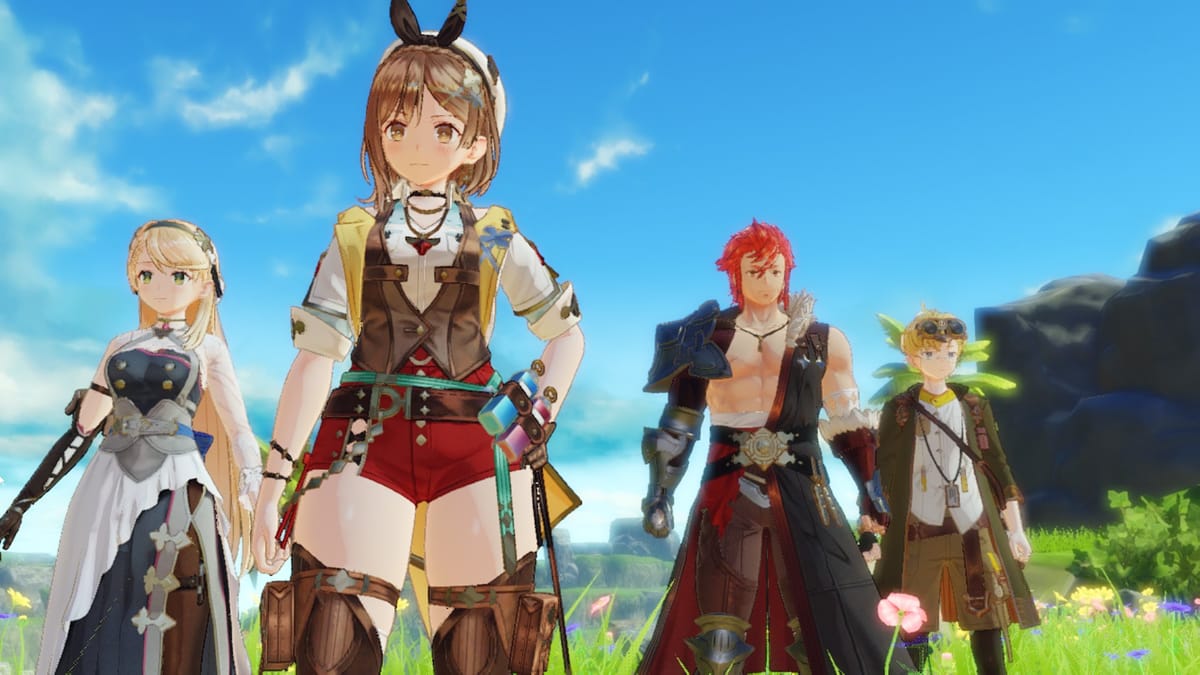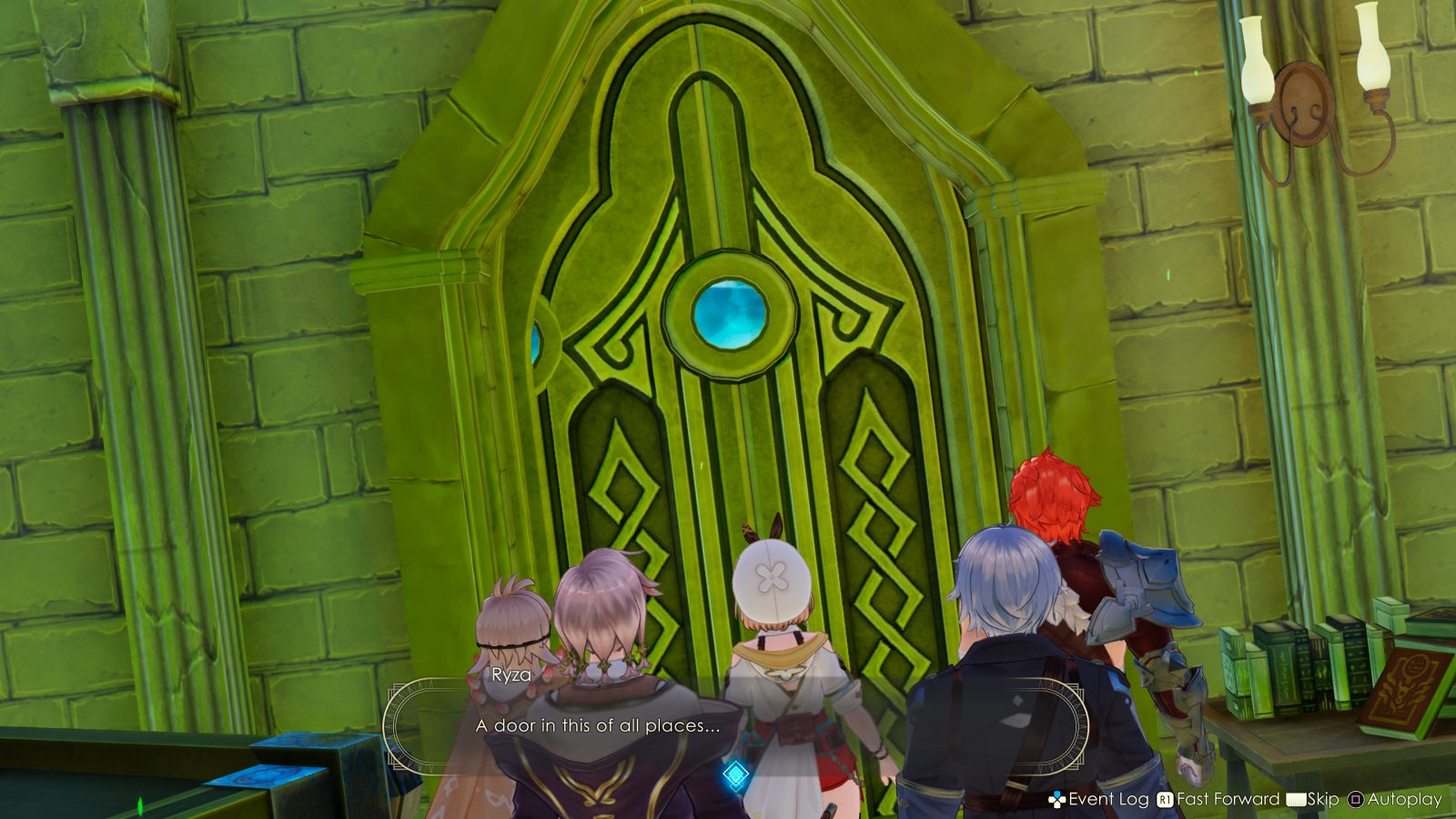
Atelier Ryza 3: Alchemist of the End & the Secret Key is the third, and unfortunately, the final entry into the fan favorite and highly engaging Atelier Ryza series, which follows the adventures of the young alchemist Reisalin “Ryza” Stout and her friends. Despite some flaws, the third game manages to wrap up the adventures of our heroine in the best way via new features, engaging gameplay, a new massive world, and a heart-touching narrative.
Atelier Ryza 3 takes place a year after the last game in Ryza’s hometown of Kurken, where she’s revered as both a hero and a highly capable alchemist due to her past actions, heroic deeds, and now valuable experience. However, while performing her duties as the local alchemist of the island, her peaceful life is unexpectedly disrupted by the appearance of new mysterious surrounding islands, along with a mysterious voice in Ryza’s head that tells her to craft an equally mysterious key for a far-off location. To get to the bottom of things, Ryza calls upon the help of her friends, some new and some returning, as more details about the event begin to unravel.
The first few hours of Atelier Ryza 3 are highly nostalgic, particularly for returning players. These segments focus on recalling Ryza’s prior adventures with returning characters such as Tao, Lent, and Klaudia via flashback sequences in the middle of missions. After these scenes, the story then shifts focus to the main event and introduces all new characters leading to a massive 11 playable character cast, all with their own stories which I won’t spoil. While the game’s narrative admittedly takes some time to get going, when it does, the story being told is highly engaging and heartwarming.
As for gameplay, Atelier Ryza 3’s combat system is detailed, fast-paced, and enjoyable. The game uses a blend of turn-based and real-time combat. Players must wait until the action bar fills up to perform basic attacks. Doing so will grant you Ability Points which can be used to perform special magical and physical skills. Additionally, using skills will give you Core Charge Points, which are needed in order to use combat and consumable items during fights. As you can probably tell, the battle system is almost too detailed, especially when you add in elements such as buffs, debuffs, healing, and more. However, while a newcomer may take some time to figure it all out, returning players won’t find much new to learn. The only real issue I found is that the pacing of combat often gets disrupted when players need to wait to attack in pivotal moments, and even more so when several party members are stunned and the action bar resets.
Outside combat, players will also spend significant time with the series’ signature alchemy “synthesis” crafting system. The system primarily remains unchanged from the previous game. Players can gather materials in order to craft tools with varying traits, stats, and quality. Crafting tools with the best stats and materials will grant several unique bonuses, which can then be used to gather more advanced items necessary to craft even higher tools and weapons. The new ‘Secret Key’ mechanic is the latest addition to this system. Players can create special keys that can be used in combat to buff their party, or used outside combat to enhance synthesis during crafting. Like the battle system, returning players will have no issues with the synthesis system as 90 percent of the mechanic carries over. However, new players may take much longer to get the hang of.
The most exciting part of the gameplay for me was the several new locations with fantastic old and new traversal methods, from zip lines to new mounts such as dolphins. These new traversal options do a great job of allowing players to explore the new lush, vibrant, and detailed locations the game has to offer, many of which are much larger and more engaging than in previous games.
While exploring, players can also run into several sub-quests of varying types. Most will task the player with exploring surrounding areas to gather materials or fight enemies for NPCs, while “random quests” are more time sensitive and are usually quicker to do than the average side quests. While I found these quests relatively inoffensive, many of them are, unfortunately, predictable and repetitive.
Aside from that, Atelier Ryza 3 sports incredibly detailed and vivid visuals, a highly aesthetic art direction, and crisp animations, especially on the PS5. The game also runs well on both the performance and quality modes. However, my biggest issue with how the game runs is how noticeably slow everything is during cutscenes. Every character motion is sluggish, and transitions feel very delayed. As someone who values speed in games, the pacing really threw me off.
All in all, though not without its flaws, Atelier Ryza 3: Alchemist of the End & the Secret Key succeeded in being my favorite entry in the series despite being the last. If you’re a series fan or just a JRPG fan, the game’s large world, endearing cast, fun gameplay, and interesting story will keep you engaged for hours.
Atelier Ryza 3: Alchemist of the End & the Secret Key
Great
Despite some annoyances, Atelier Ryza 3 wraps up Ryza’s journey in a fantastic way, while introducing new elements for both new and returning fans.
Pros
- Great art direction and visuals
- Nice story
- Fast paced combat
Cons
- Very slow paced story
- Painfully slow cutscenes
- Some mechanics can get confusing for new players




